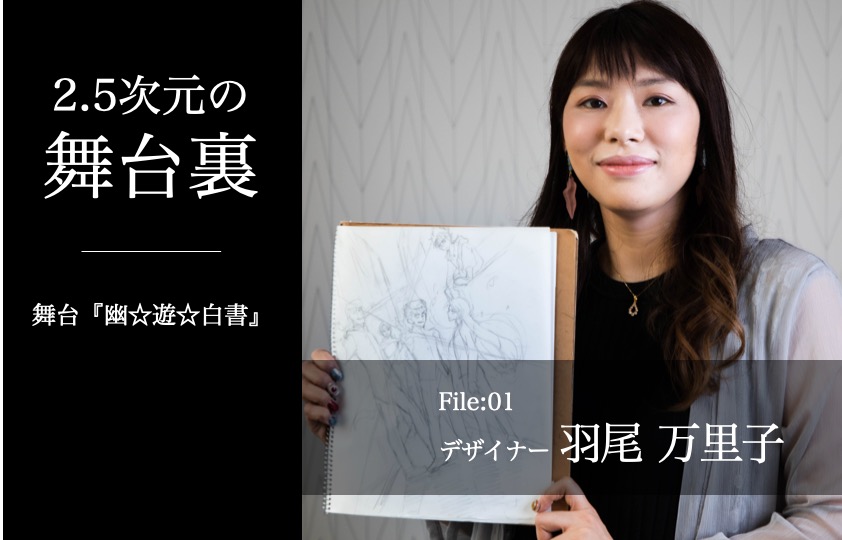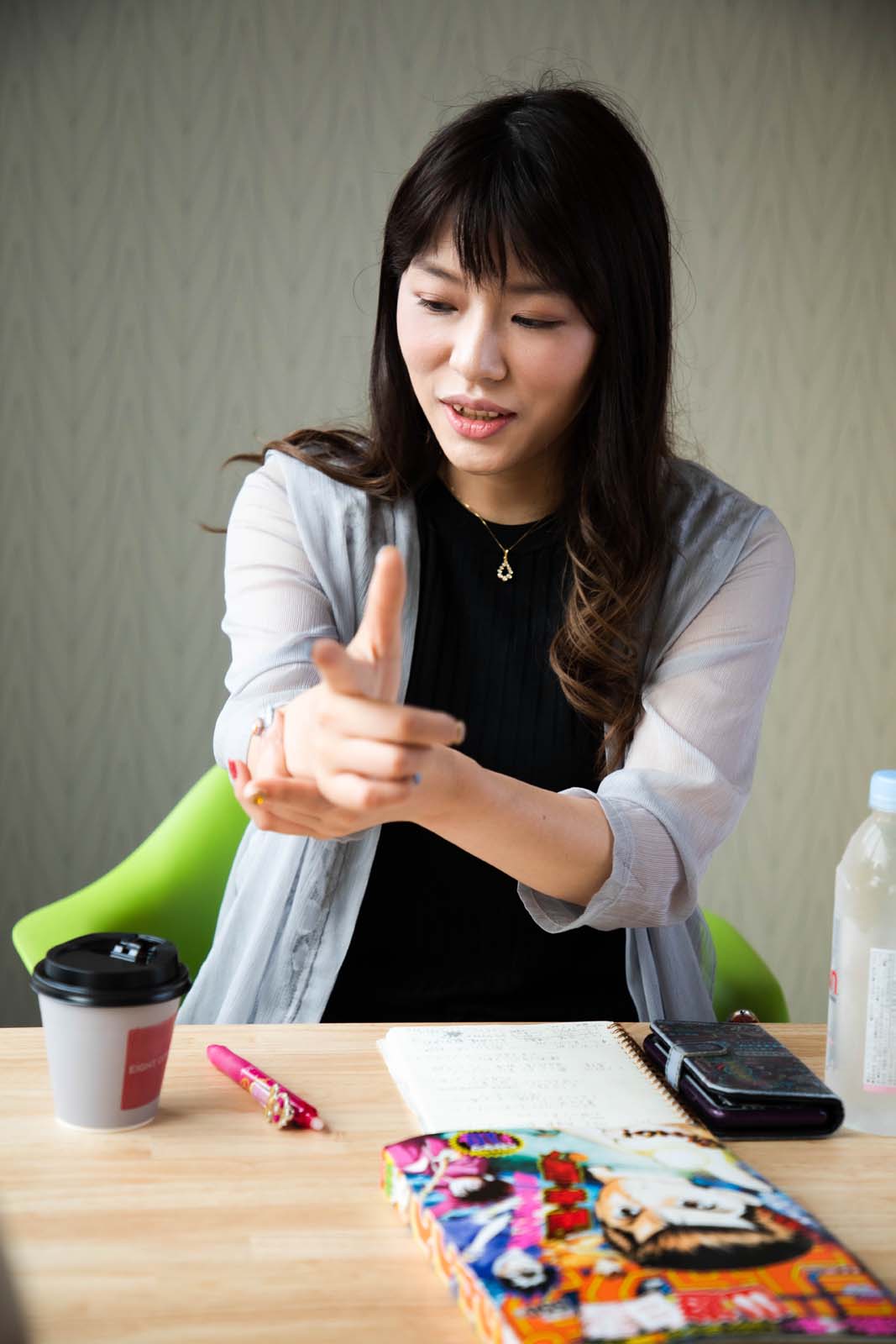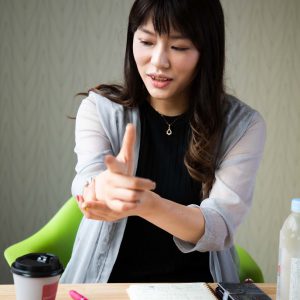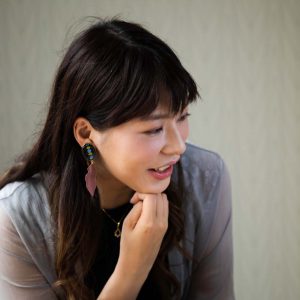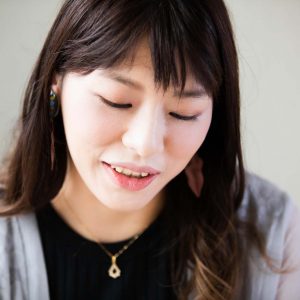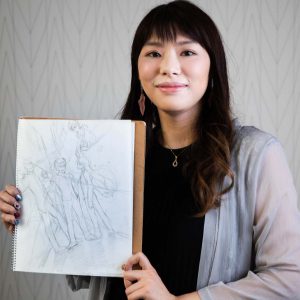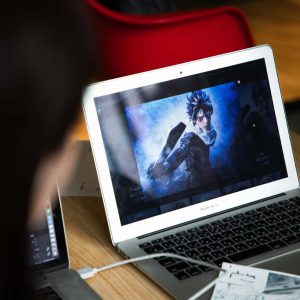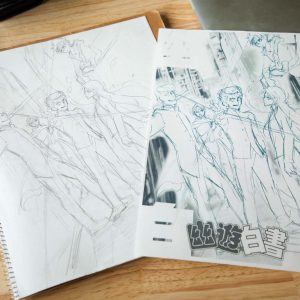It's not just actors that have created a great stage. Many producers are involved, including production, costumes, makeup, and designers. “2.5 Jigen !!” focuses on the work behind the scenes that you can't usually see.
The first installment introduces Mariko Hao, a designer who worked on advertising art such as key visuals in the hot stage “Yu Yu Hakusho”, which opens on August 28th.
 ▲ He explained the process of production along with key visual design drawings
▲ He explained the process of production along with key visual design drawings
―― “Yu Yu Yu Hakusho” written by Yoshihiro Togashi was serialized from 1990 to 1994 in “Weekly Shonen Jump” (Shueisha). It is a popular work not only in Japan but also in the world. What did you think when you first received a job request?
I received a request over the phone last winter, but at that time, I was in Shinjuku Station, and when I heard "Yu no Haku ...", my voice came out unintentionally.
Moreover, when Hiroki Suzuki, who was also on stage “Touken Ranbu”, heard that he was playing the role of Kurama, the tension was raised as “This is a great work!” He said "Please let me do it" on the spot.
--When did you start being in charge of the 2.5D stage?
About 7 years ago. I loved drawing since I was little. When I was in college, I was in a theater club, making posters and flyers as actors.
While working as a member of society, I happened to meet the producer of the stage “Yowamushi Pedal” and work together.
Since then, I have been doing visual design for 2.5-dimensional stage posters and goods. Recently, I am in charge of the stage “Touken Ranbu”, Fate / Grand Order THE STAGE, and the stage “Blood Blockade Battlefront”.
――Are you originally a fan of “Yu Yu Hakusho”?
Yes. I read comics a little late when I was in middle school. I also like anime. The recommendation is "Adult Koenma". When Koenma, who was small, came out big, he was punched with Zukuon.
But I remember being crazy about the fun of the manga itself above all.
 ▲ The visuals are full of the creators' thoughts
▲ The visuals are full of the creators' thoughts
A modern and chic visual.
-The great key visual has been lifted, and high reproducibility has become a hot topic. How did you proceed?
It wasn't until spring that we actually started moving.
First, we will discuss what direction the visual will be. I drew a visual line drawing and proceeded with photography. The key visual was drawn with the theme of protecting the city behind the scenes, following the episode when Yusuke was a detective of the spirit world.
Costumes and hair colors are based on anime. However, I think that the goal of making a modern and chic impression so as not to be too pop with colorful colors was shared by the costume, makeup, and design teams.
――Where did you focus on making visuals?
Yusuke talked about "I really want to put Reimaru". In consultation with photographer Fuhito Kanayama, I made lighting that struck the strobe light behind the fingers that put out the spirit circle. Kuwabara's spirit sword is also well-designed, but the base is the same.
Kurama wants the key visual to have a rose. The character visuals were all set to have weapons, so they had a “Rose Whip”. I took it so that the tip of the whip was fixed and a dynamic feeling was produced. There was a scene where Mr. Hiroki Suzuki shook his rose thorn blade hard with Pasympashin.
Hikage has one of the three great treasures of darkness in the Spiritual World Hallows Museum, the “Sword of Demon”. This is a rare weapon that can only be seen in early episodes.
The image color used in the character visual was based on the anime character color. Is Coemma blue? Is the shadow blue? black? Kuwahara is blue because the clothes are blue? As a result of discussions, the color balance of the main character was improved when Kuwabara was changed to yellow hair, and the present form was settled.
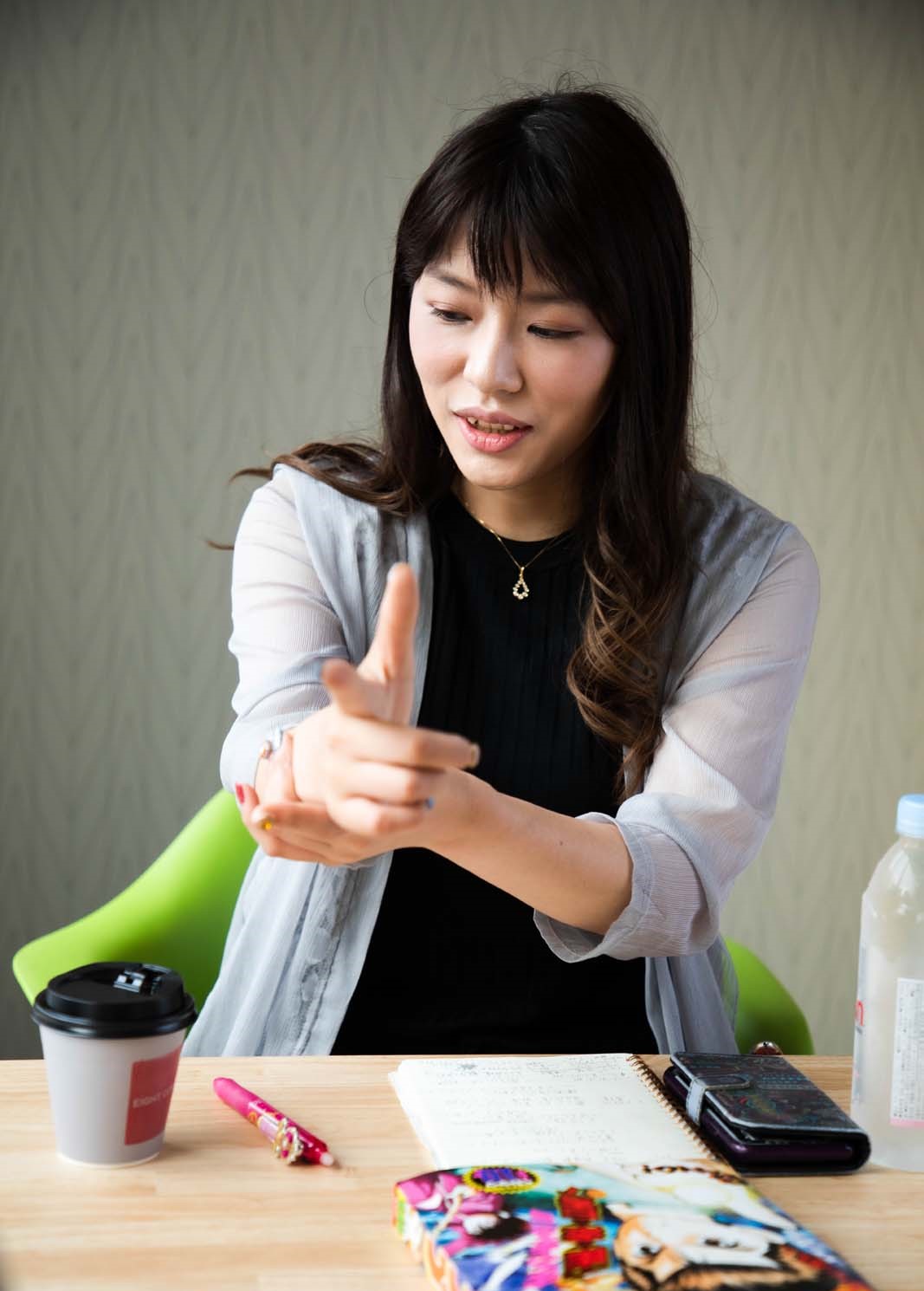 ▲ Commentary about Yusuke Reimaru's shooting scene
▲ Commentary about Yusuke Reimaru's shooting scene
Shooting like a storm Impressed by the actor's spirit
――What kind of atmosphere was the shooting site?
it was fun. The actor will reproduce the key visual design almost as it is. Since all of them are experienced actors, I say, for example, “The shadows look more similar when you pull the chin”. Everyone has brought the character of the work from the beginning.
――Do you shoot together with five people?
No. There is also a schedule relationship, so each photograph taken is matched. It was like a storm.
Tsubasa Sakiyama, who plays Yusuke, did not have much shooting time due to the schedule, but because of Sakiyama, I was able to shoot great cuts even in a short time.
--Kuwabara is also reproduced beautifully.
Naoya Gomoto's Kuwabara is too similar. As soon as you come to the shooting site after fitting. That was great. The mouth is the best. How to get chin and cheek bones (laughs). There are plenty of shooting variations, and there are moments that make you crazy, and when you want to bring out the coolness of a man. When you grow up, you realize that Kuwabara is so cool.
――Hikage is played by Shohei Hashimoto.
Mr. Hashimoto is a wide range of actors who can do everything from cool roles to cute roles. I worked with them before, so I was able to shoot while deciding with a feeling of familiarity.
Although the first and subsequent characters are completely different, I am wondering how they are drawn on the stage. Flying shadows are cool and cool, but there are actually some cute places. I wanted to visually express the shadows that fans wanted.
――As with Hikage, Kurama is a popular character. Did you have a hard time making visuals?
Kurama was difficult. Suzuki has many fans. And Kurama has many fans. There was a battle to see how much of the original work was done and how much Suzuki's charm would be left.
Mr. Suzuki is from the stage "Yowamushi Pedal", but he is an actor who can hear 10 and know 10 and will make a wonderful expression more than requested.
――How did you make use of the charm of the actors, including Mr. Suzuki?
I tried not to erase my acting ability and good expression. Those who are good at acting appear in the expression of the eyes. He / she brings out atmosphere of the moment that seems to talk to now. Designed to make use of it.
All ghostly characters have coolness, cuteness, and various aspects. I try to make it as much as possible so that I can show the facial expressions that the actors have expressed.
-How was Koenma played by Hirofumi Araki?
There is a “pacifier problem”. It seemed to be difficult to smile while holding a pacifier, but as I got used to it quickly as I took the photo, the actor was really amazing.
And I wanted to express how the cloth fluttered, so there was a scene where Araki jumped.
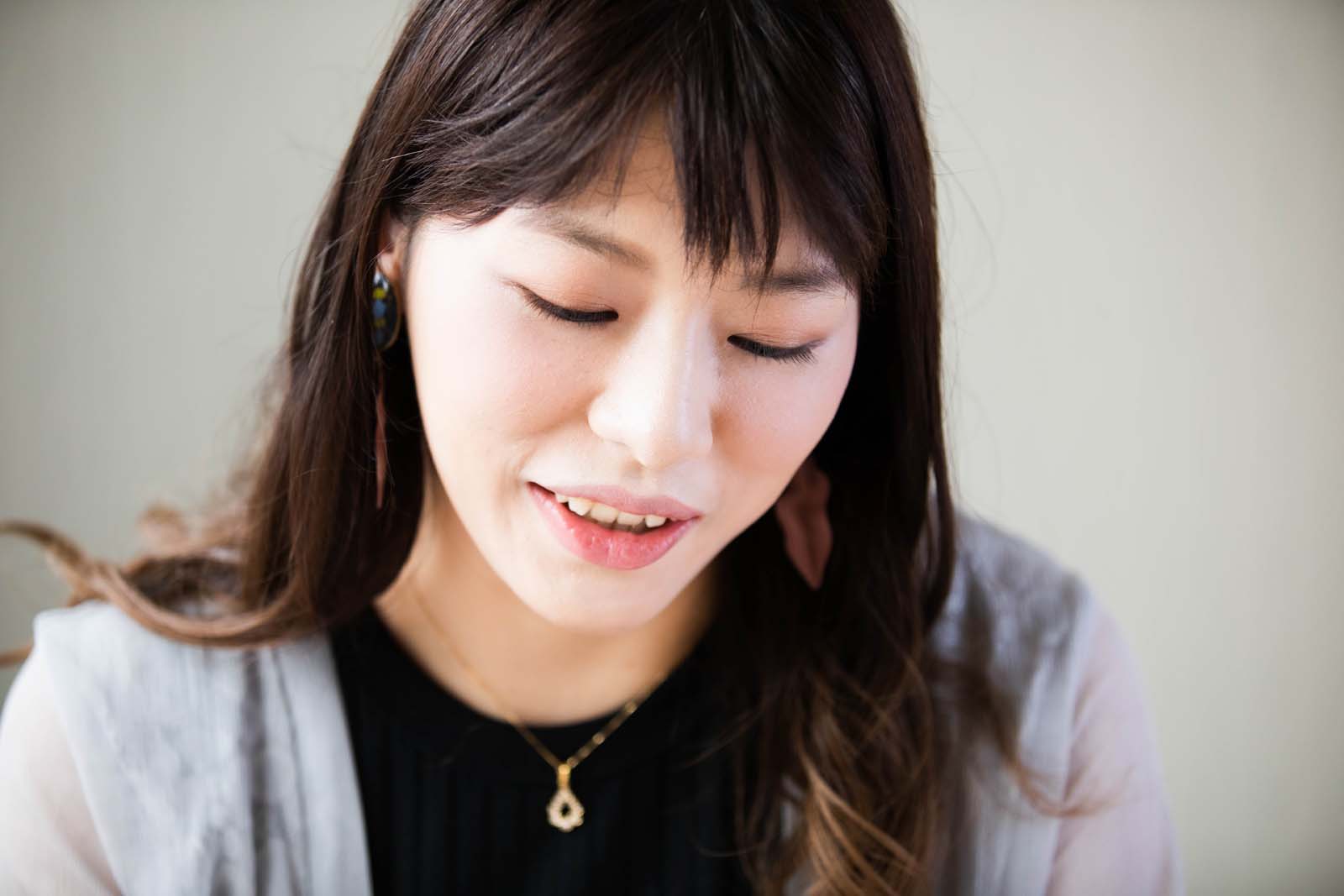 ▲ Tell me what you cherish as a designer
▲ Tell me what you cherish as a designer
A dream-like scene “Creating absolutely good things” tension
--- Manga and anime have many fans. Was there any pressure?
There was a feeling of tension that everyone would make a good thing, the pressure and responsibility for this work, and there was a good sense of tension. I wanted the original fans to say it was good too. However, there is not much hardship, and it seems like a dream, surrounded by wonderful actors and staff.
The actors and staff were feeling rather than talking about each other.
For example, “Touken Ranbu” has a discussion on character interpretation, but “Yu Yu Hakusho” shared a character image and was zealous. Before the staff gave instructions, there were many occasions where actors changed their poses thinking about the same thing.
――When is the most happy moment as a designer?
That ’s when I received a voice of reverberation. How is it excited when the key visual comes out?
Fortunately, in addition to fans on the 2.5D stage, there were also responses from people in Europe and Arabic speaking on Twitter. I thought that “Yu Yu Hakusho” was loved from all over the world. I want it to be a legendary stage.
--What do you cherish as a designer?
The stage cannot be taken home. Customers have no choice but to go home with memories. The only visuals that I have created can be brought back physically. I want to create a visual that revives the memories and excitement vividly.
I want to show the actor's various expressions, and the only time I can hit the memories of “Oh, that ’s good” is the visual and goods. I want to be strong enough to accept that thought.
I hope to be able to bridge memories and customers.
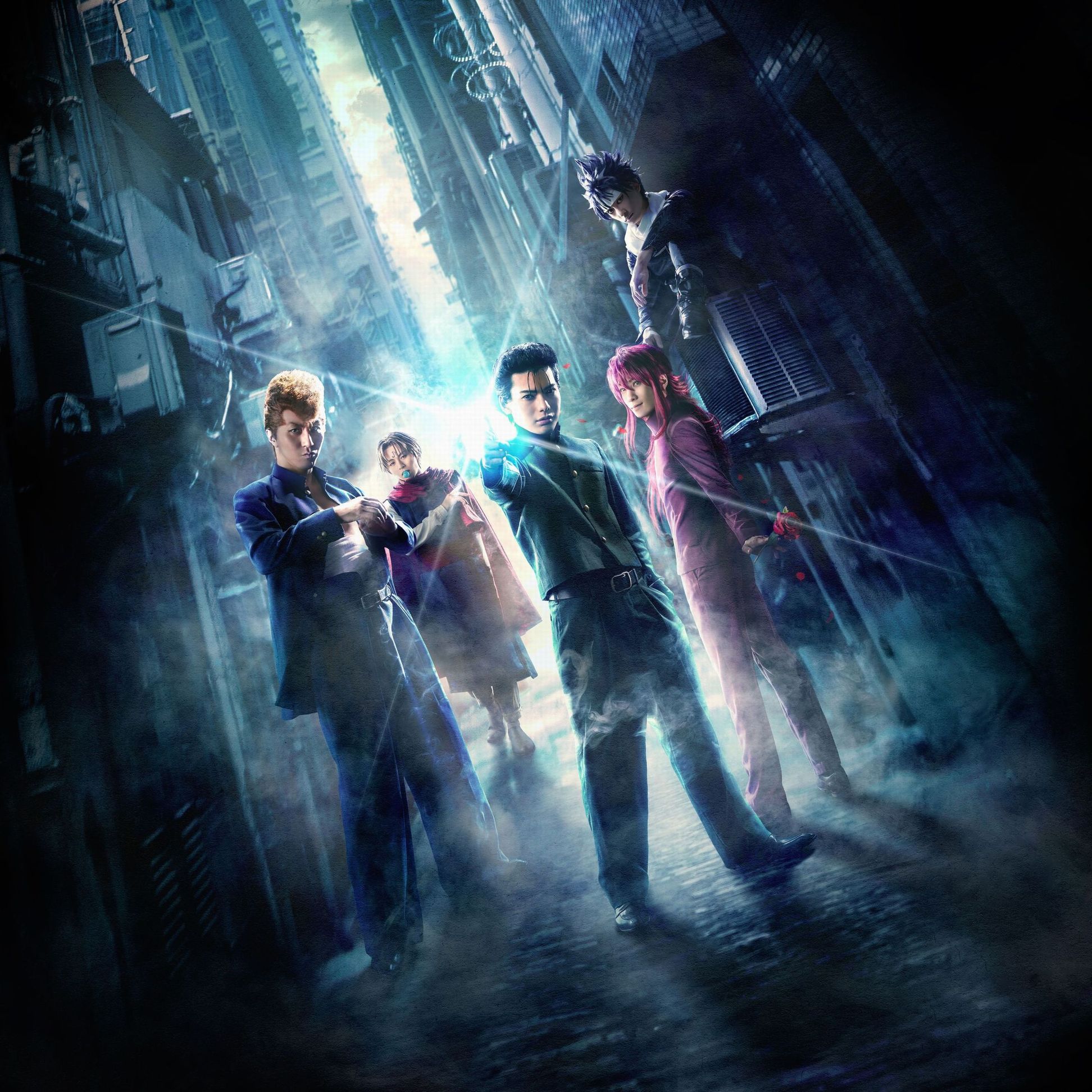 © Stage Yu Yu Hakusho Production Committee / © Yoshihiro Togashi 1990-1994
© Stage Yu Yu Hakusho Production Committee / © Yoshihiro Togashi 1990-1994
(Provided by Mariko Hao)
広告
広告



